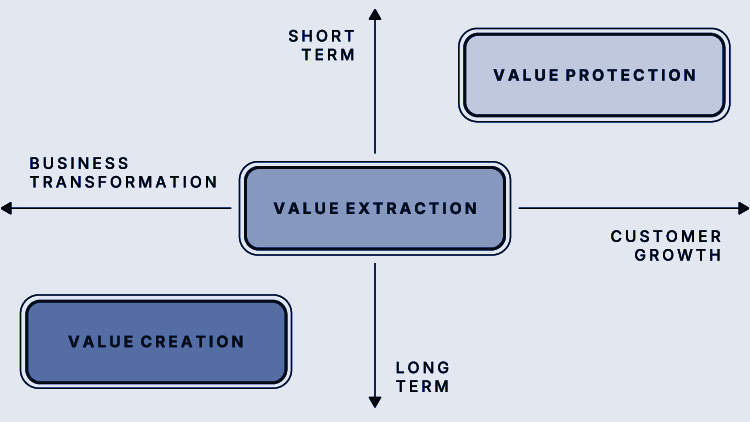Marketing management and
planning
The Marketing Quotient framework was developed in 2019. It was recently revised ahead of its anniversary.
The Marketing Quotient framework was developed in 2019. It was recently revised ahead of its anniversary.
Commercial priorities change. But the need to reach and keep customers doesn't
Respond to a world where modern life fractures thought, digital culture shards identity, and branded messaging reaches saturation by aligning initiatives to shareholder, stakeholder, and audience requirements.

Innovation fails when unsubstantiated novelties become distractions and create inertia
Take a systemic approach to marketing management. Start internally with structure and processes then expand out to the marketing landscape; creating competitive advantage with programs that empower and engage employees, partners, and customers.
Value creation
Prioritise go-to-market, product development, and scaling opportunities. Break goals into department objectives and the subsequent initiatives individuals take accountability for.

Value extraction
Deliver incremental gains through capability in people and systems. Horizontal mobility and role re-definition become more important to maintain culture and institutional knowledge as platform automation simplifies human tasks.

Value protection
Reach the right audience; increase lifetime engagement. Recognise trend adoption is faster, is increasingly fleeting, all the while appearing more widespread; and lay groundwork for the external relationships needed to be invited into the idealogue when it matters.

Adaptability as competitive advantage

Your audience want shortcuts. They're experimenting with quicker, simpler ways to do things in their personal life and business. So the biggest challenge to growth isn’t external, it’s internal. Getting any organisation to keep up with the new shortcuts your audience takes is hard. Fortunately many of these shortcuts are found on digital platforms and in connected communities. This means they are visible, measurable, and can be monetised.
Customer-centricity unlocks discretionary energy

Building a connected culture around the customer is the first step to keeping up with them. Siloed intelligence is not interesting or competitive in any context — in a room full of smart people the creative person stands out by connecting opportunities others haven't seen. This applied creativity is more powerful than intelligence alone because the enduring outcome of innovation is a better result.
Power = Effect / Effort.
Tell your story well

Trust is the currency of any community. And the internet is no different. A place where consequence is immediate, scale is unmatched, and everything lasts forever. It is no longer an alternate reality.
Digital-native cohorts are the majority of discretionary income and commercial decision influence, and more of who we are is defined by and expressed through the world wide web. What happens there shapes our lives and business success. And when, how, and who our brand shows up with becomes our legacy.